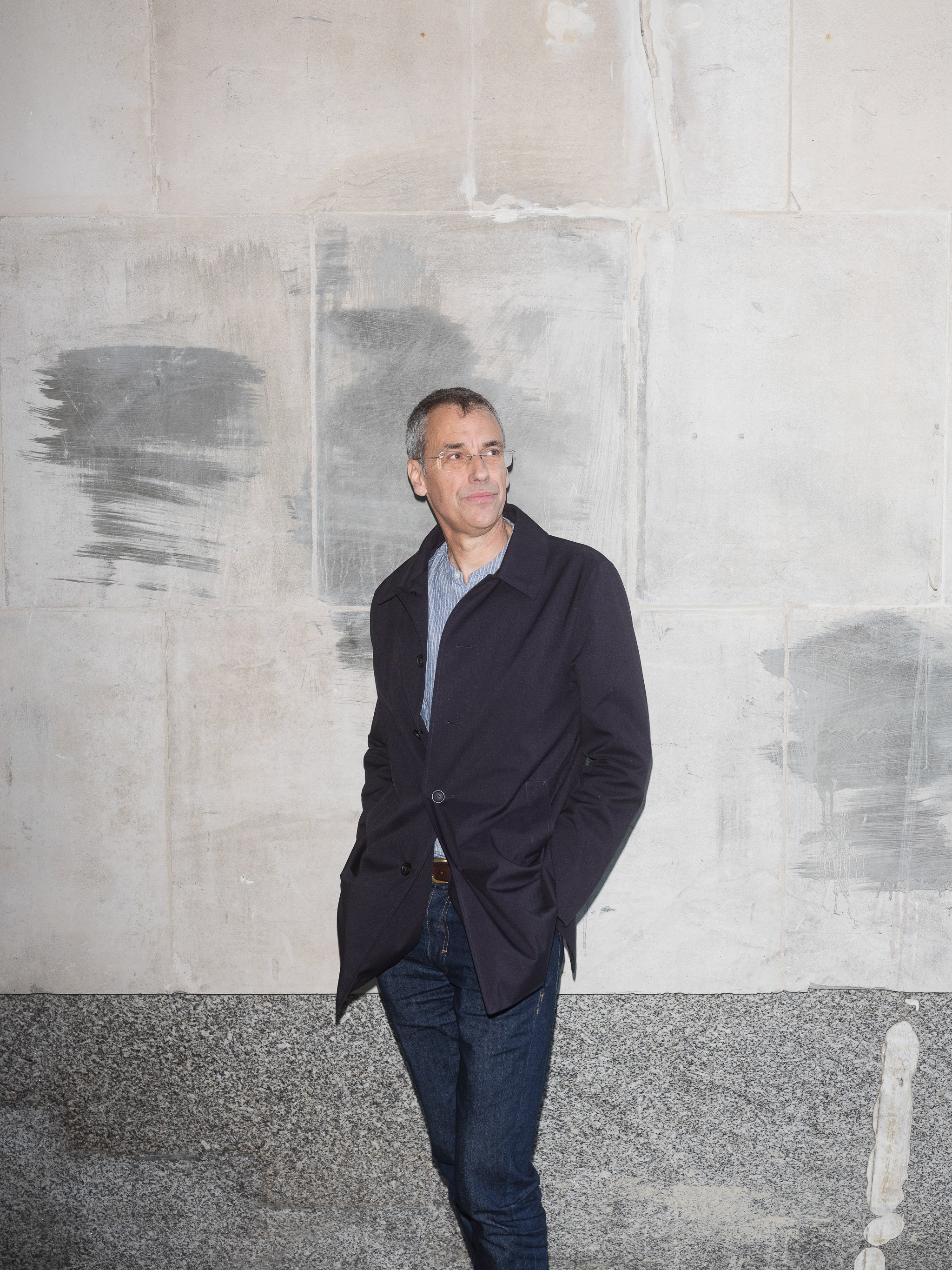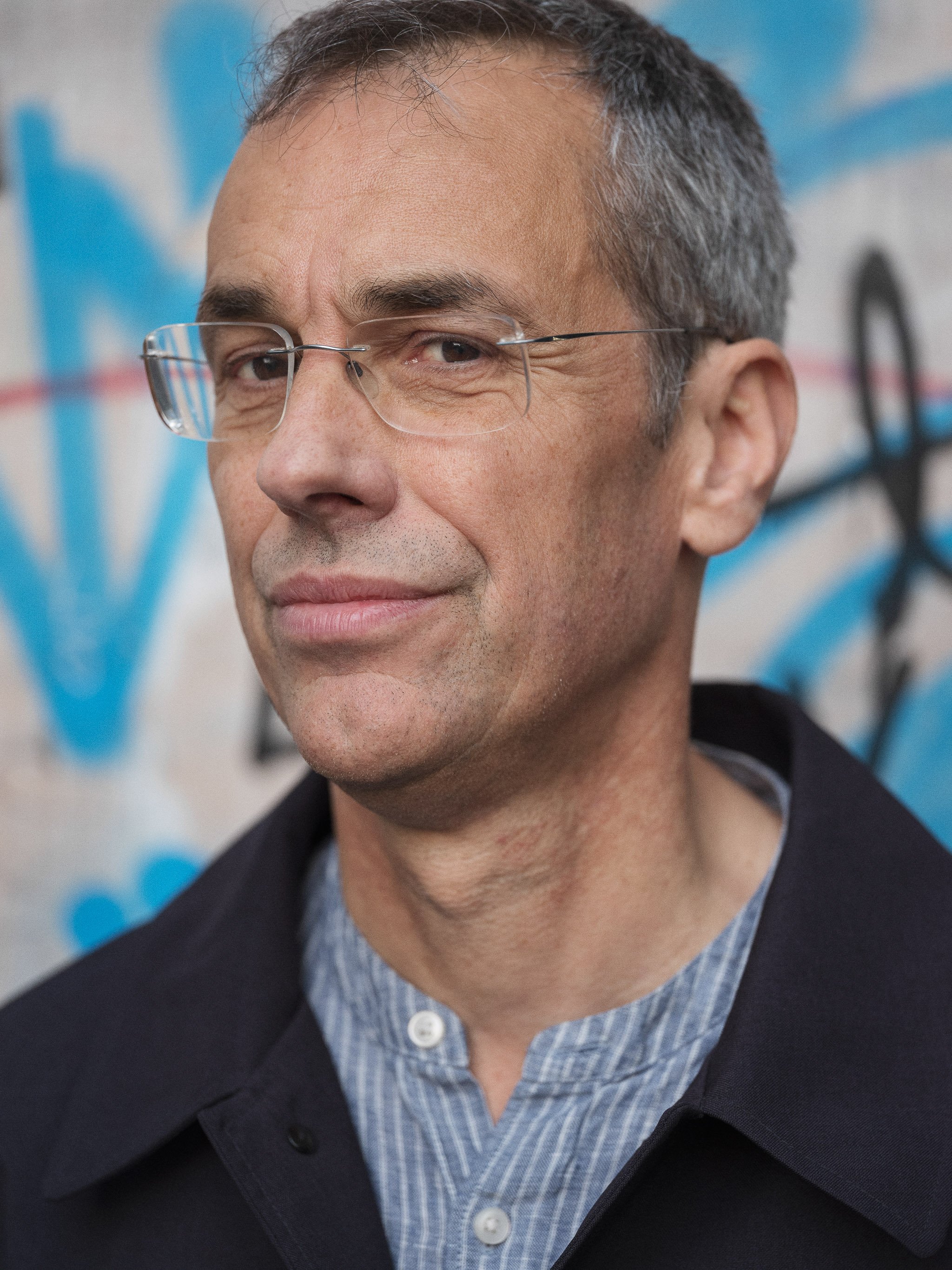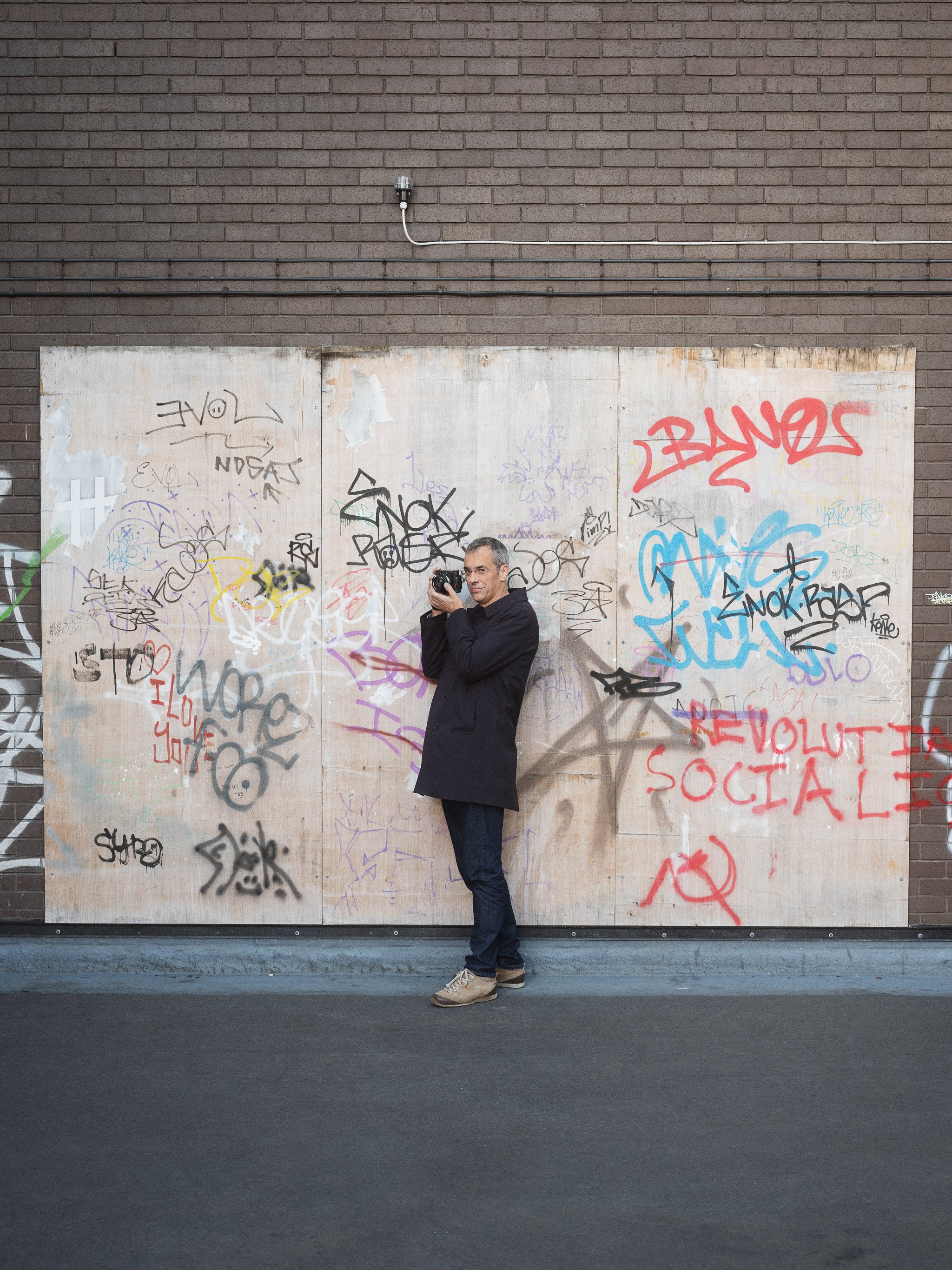ON THE RECORD
Tom Warburton
Having missed opportunities to take photos of the 1989 Tiananmen Square protests and the fall of the Berlin Wall the same year, amateur photographer Tom Warburton wasn’t going to let this third chance to record history slip through his fingers more than 30 years later.
Interview by Alison Cowie
Photographs by Christopher Owens
Tom Warburton was Director of City Futures at Newcastle City Council when COVID hit in early 2020, and he was at the vanguard of the city’s response to the pandemic alongside the Council’s Chief Executive, Pat Ritchie, and the Director of Public Health, Eugene Milne.
Recognising the access this position could provide, the amateur photographer was soon reaching for his camera.
“We were getting briefed on COVID so I knew I was going to be in the middle of this huge story and that I would get unique access to record this moment of history,” the former senior director recalls.
Tom, who had carved out an illustrious career in the public sector, began taking photos at a senior managers’ meeting on March 16, 2020 – the first socially distanced event at Newcastle’s Civic Centre. His initial plan was to document council meetings and to gift the results to Tyne & Wear Archives and Museums.
But as the magnitude of the pandemic expanded, so did the scope of Tom’s photography project, which he managed alongside his duties as one of the council’s most senior directors.
Over the next two years, Tom spent his downtime shooting everything from empty Newcastle streets and government offices, to care homes, food banks, laboratories, testing centres, hospital wards, crematoriums, GP surgeries, vaccinations, and anti-vax demonstrations.
“Initially, I thought I would tell the council’s story but things just grew,” Tom explains. “I spoke to the communications department at Newcastle Hospitals, which were inundated with requests. I explained that I wasn’t looking for a press story or doing an exposé. I was just looking to make a record of what was happening in the city and they were really responsive to that.”
“I was going to be in the middle of this huge story and that I would get unique access to record this moment of history,”
The results of Tom’s photo exploration have now been turned into a book by Tyne Bridge Publishing and sponsored by Ryder Architects.
‘COVID in Newcastle: A Photographic Record’ is available to anyone looking for a unique insight into how the city, its workers and residents dealt with the global pandemic, with the book’s profits being shared between Newcastle Hospitals Trust and West End Food Bank.
While Tom hopes his coffee-table tome proves popular with those directly involved in the city’s COVID response, he is realistic that the legacy of his work may take a while to be fully realised.
“There’s a British documentary photographer called Daniel Meadows who says that you should be prepared to wait 20 years before people are interested in your work. That could be the case with these photos. A lot of people are sick of COVID at the moment but for future generations, the book will be an important reminder about how the city responded to this huge event.”
Tom grew up in rural Cumbria on a farm in Appleby – still run by his two brothers – but it was at school that his love of photography first formed.
“My pal, Tim, and I became interested in taking photos in our late teens and so our art teacher would let us spend our lunchtimes in the school’s dark room where we learnt all about traditional photo processing. I can still remember the smell of the chemicals.”
While his friend went on to do fine art at university, Tom took a different route and studied biology at the University of Liverpool. But he was rarely without his camera during his student days.
“I always had my camera with me and I’d take portraits of my friends,” he remembers.
“It wasn’t until I left the hospital and was walking back to my flat that the enormity of what I’d just seen hit me.”
After graduating, Tom spent two-and-a-half years travelling the world taking photos of his adventures whenever he could.
It was when he was in Thailand that he turned down an invitation to visit Tiananmen Square just as a brutal government crackdown on student protestors sent shockwaves around the world.
Later in 1989, Tom was also unable to visit Germany’s capital city to witness its reunification as the Berlin Wall fell. Instead he stayed in the UK to take up a position at the National Rivers Authority in Darlington.
These missed opportunities to take history-making photos always weighed heavy on the amateur photographer, and so in early 2020, as the biggest medical, economic and social emergency for 100 years swept the globe, he knew he had to act.
Tom wanted to record the wide variety of people who were part of the Herculean efforts to keep the city functioning during COVID, from the Council’s chiefs and the office workers managing the City Lives initiative to the doctors, nurses, registrars, refuse collectors, cleaners, care workers and scientists.
His favourite photo adorns the cover of his book and is a powerful headshot of one of the mortuary staff at the Royal Victoria Infirmary (RVI) in Newcastle’s city centre.
“As soon as I took it I knew it was a beauty but I didn’t have his contact details to let him know it was going to be the cover shot,” Tom explains.
“Later on, I was at a funeral directors in Gateshead and I happened to show the photo to a woman who worked there. She said, ‘oh that’s Paul; I trained with him’. I was then able to get in touch with him and give him a print of the photo.”
Unsurprisingly, the images Tom took in the intensive care unit (ICU) at the RVI had the biggest impact on him.
“I had previously taken photos at the hospital but it was when COVID was at its peak and I hadn’t been allowed into the COVID wards or the ICU,” Tom describes. “Then, one day Alison Sykes, who was the nurse in charge of infection prevention and control, rang me and said I could go in the next day. She knew about my photo project and recognised the record I was building up.
“Alison was with me the whole time and I wore full PPE,” Tom continues. “At the time, I felt quite calm. It wasn’t until I left the hospital and was walking back to my flat that the enormity of what I’d just seen hit me.”
A few days later, Tom photographed an anti-vaccination protest where he saw people holding signs that COVID was a hoax.
“Having just been in the ICU and seeing people on ventilators and the impact COVID was making, it was a very strange juxtaposition.”
Tom has dedicated his book to ‘those who lost their lives to COVID and all the key workers who did their best to protect others.’
“COVID was, of course, terrible for so many people. But it was also a privilege seeing the city’s people come together and gel to keep things moving.”




“I was watching things unfold on television like everyone else… the next thing I knew I was driving across the Poland border to pick up displaced people.”
After a period as Interim Chief Executive, Tom retired from Newcastle City Council in January 2022. But his retirement to date has been far from relaxing.
Tom has spent the last six months working with the MAD Foundation and Eden Aid making several trips to Ukraine to transport displaced people out of the country amid the Russian invasion.
“I was watching things unfold on television like everyone else when I was contacted by John Lawler from the MAD Foundation. The next thing I knew I was driving across the Poland border to pick up displaced people.”
Tom and his daughter spent time in a refugee camp at the border, before Tom made visits to Lviv and Zaporizhzhia to help transport aid and people.
Again, recognising the enormity of the situation and the unique position he was in, Tom took photos of some of the people he was transporting to safety - the results of which can be seen at www.tom-warburton.com
Tom recalls one serendipitous moment that happened at 6am in Calais waiting to cross the English Channel.
“I had been transporting a strapping 14-year-old lad who had what looked like a hockey stick with him. I asked what it was and he told me it was a paddle, and that he was one of the best sprint canoeists in Ukraine. The minibus driver overheard our conversations and revealed that he used to be on the England team. They swapped mobile numbers and the boy is now living and training with the England coach.”
With a passion for helping others, and a compulsion to use his camera to tell people’s stories, it seems Tom is on a mission not to miss any more opportunities to record history - even if the full recognition of this work may take a couple more decades.
















